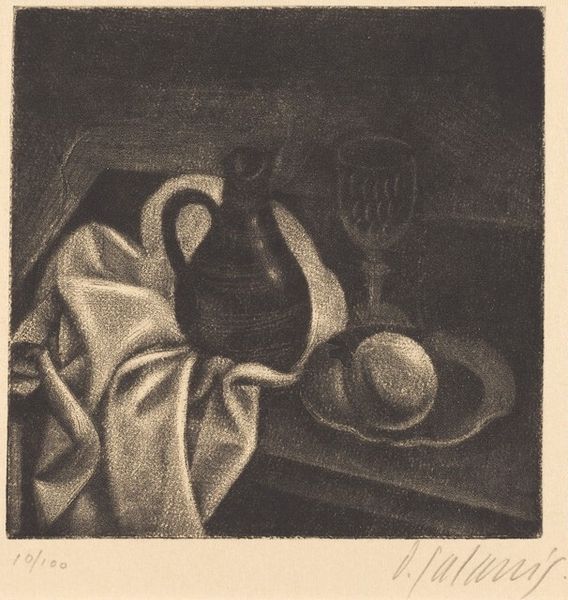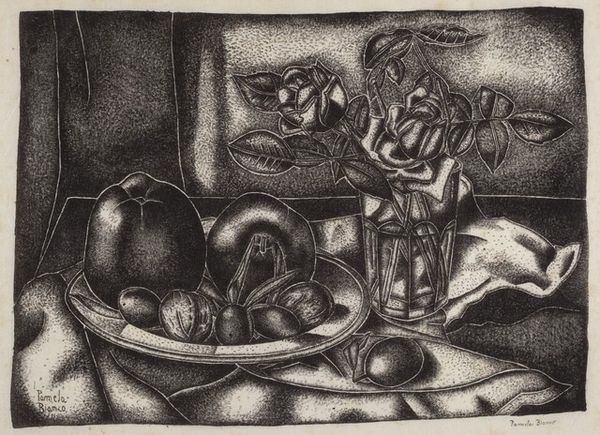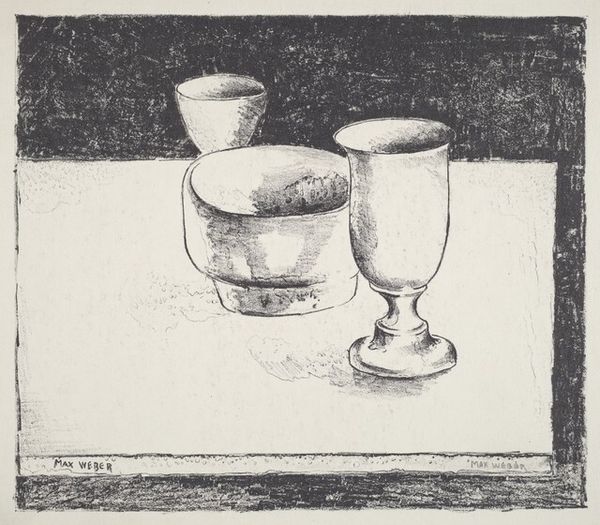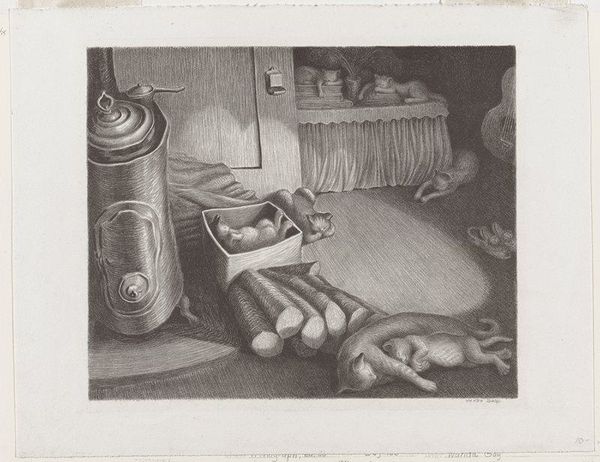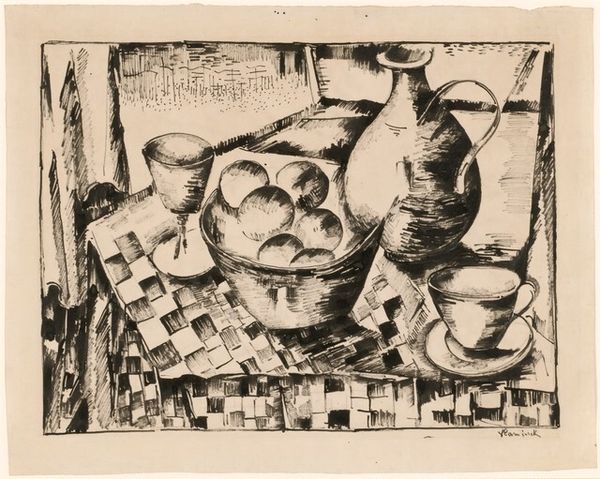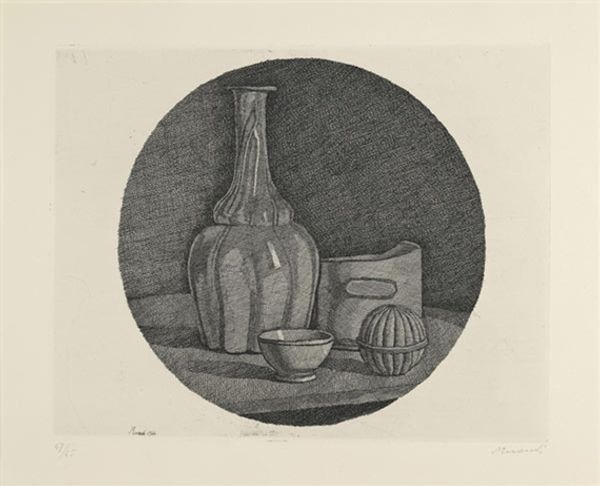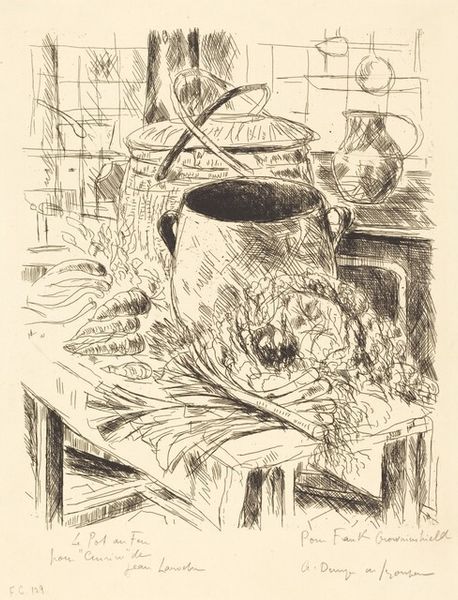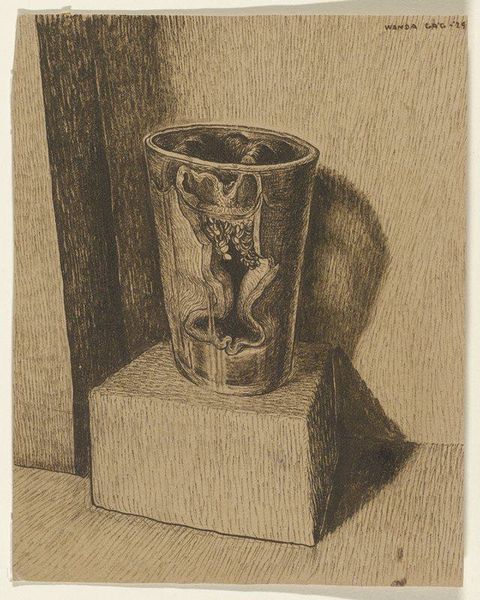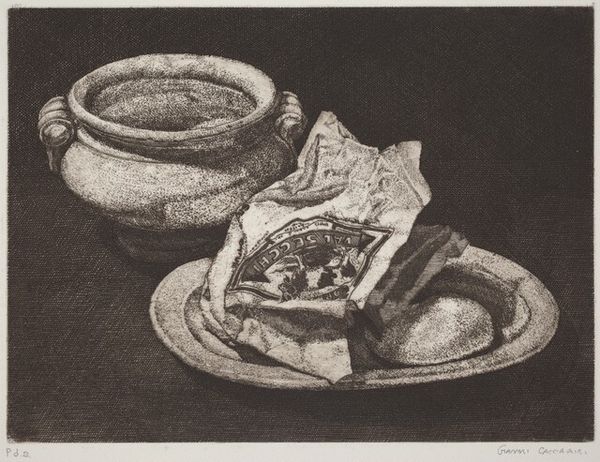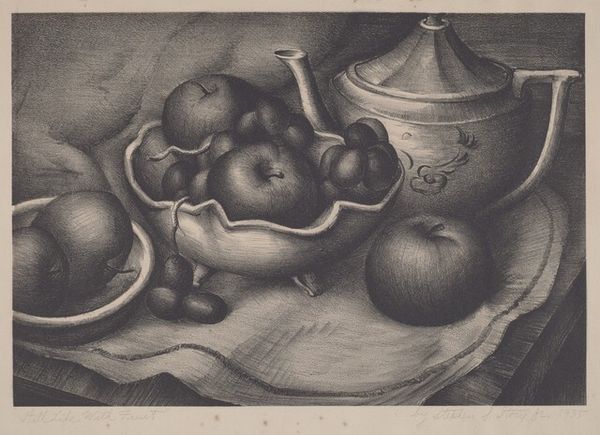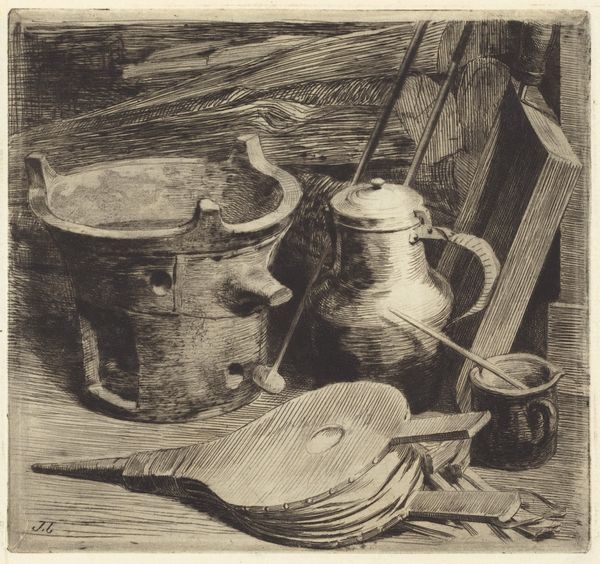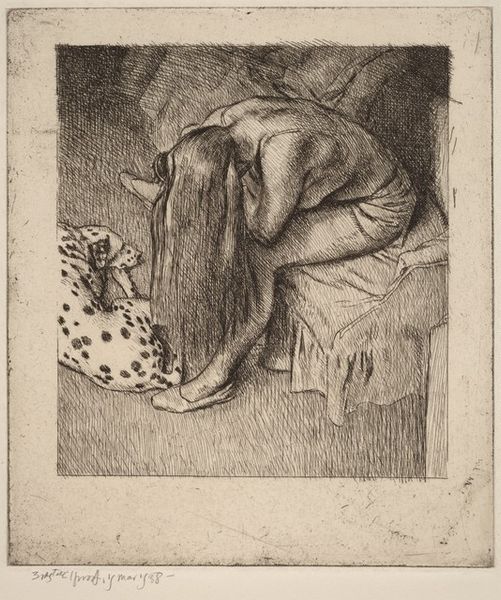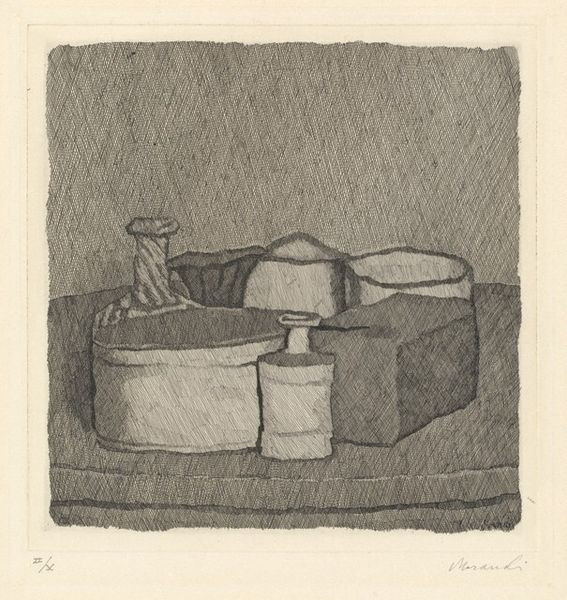
print, etching
#
pencil drawn
# print
#
etching
#
pencil drawing
#
geometric
#
modernism
Dimensions: image: 150 x 160 mm sheet: 190 x 214 mm
Copyright: National Gallery of Art: CC0 1.0
Editor: We are looking at Emil Ganso's "Still Life (No. 1)," an etching dating to around 1927-1928. There's a remarkable density to the composition, a real sense of weight in these commonplace objects—the pitcher, the fruit, the drapery. How do you interpret this work? Curator: The etching reminds us of the broader social context of still life during this period. Ganso was working during a time of rapid industrialization, and many artists turned to depicting humble, domestic scenes, perhaps as a subtle resistance to the encroaching mechanization of life. The items in the picture are the objects one has close by, creating an intimate moment. Editor: So, the act of portraying everyday objects can be read as a form of social commentary? Curator: Absolutely. It prompts us to consider whose stories and perspectives are being centered. Who are the people creating, using, and interacting with these objects? Are these objects chosen at random? Does the image represent a domestic servant or the house owner? Consider the lack of vibrant color; what does that choice mean to you? Editor: That's fascinating. The lack of color does add a certain solemnity to the piece, like a memory, and brings a feeling of reflection to what seems like an intimate setting. What can the artist have meant with such solemnity in this still life? Curator: It speaks to the broader human experience. Ganso, like many of his contemporaries, sought to elevate the ordinary and invite us to find meaning in the simplicity of daily life and see ourselves in these still lifes. This piece asks what objects you'd select and the space you'd like to depict that you identify most with. Editor: It makes me think about the power of art to transform the mundane into something meaningful, but also how still lifes, or just the act of depicting the same familiar object from different viewpoints, is like a study, a devotion. Curator: Exactly, a devotion, a meditation. It also illuminates how these representations are never neutral; they always carry the imprint of the artist’s choices, perspective, and their socio-political landscape. Thank you for considering these implications with me.
Comments
No comments
Be the first to comment and join the conversation on the ultimate creative platform.
